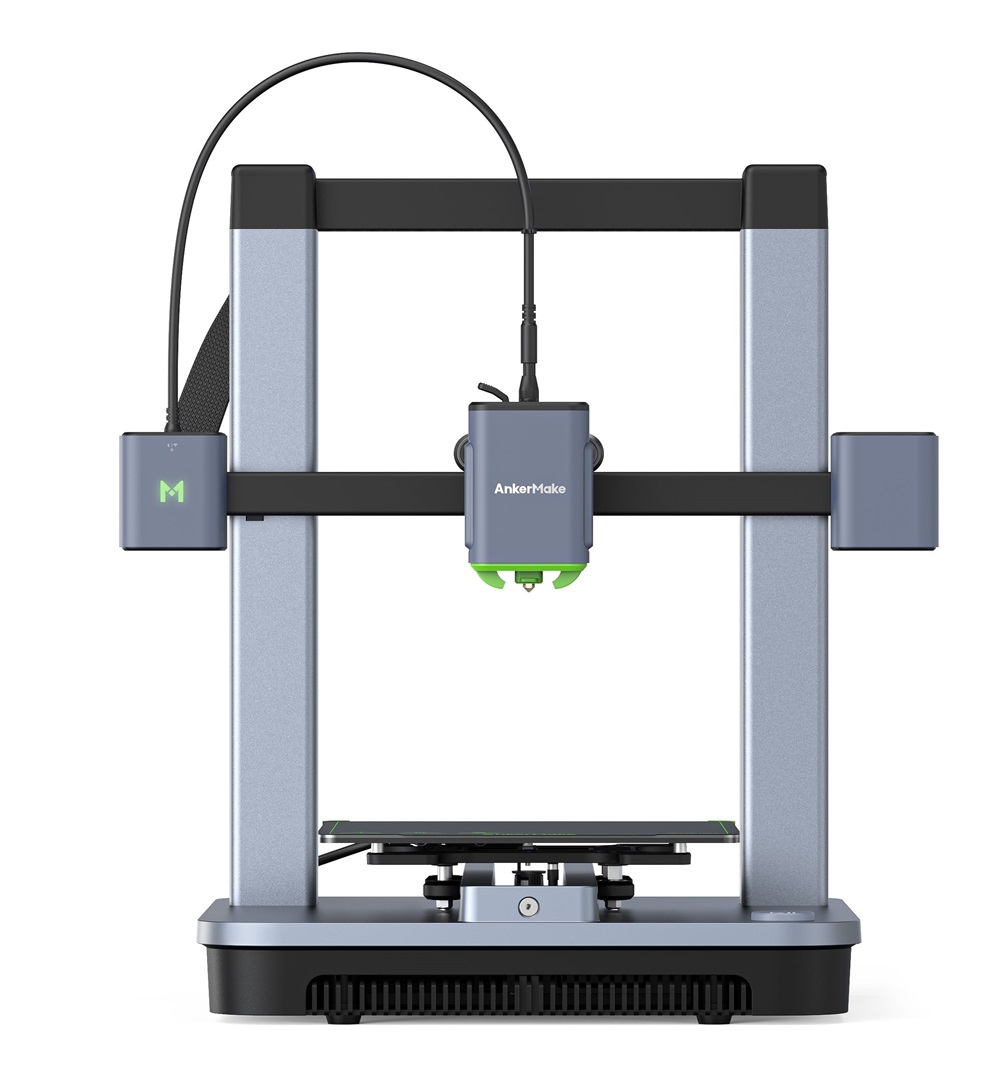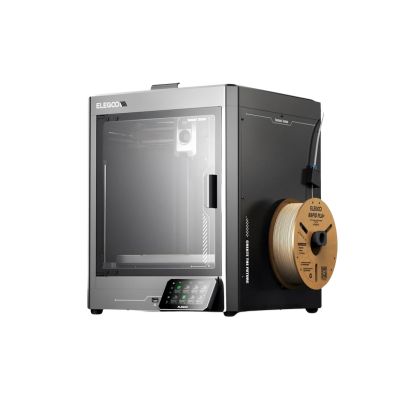Compare M5C vs Centauri Carbon
Comparison between the best 3D printers
Choose the best 3D printer at the best price. The cheapest 3D printers are here.
Buy a 3D printer here with 3D Fila.
 |
 |
|
| Model | M5C[BUY M5C] |
Centauri Carbon |
| Printing Material | Filament | Filament |
| Buy Filament for AnkerMake M5C | Buy Filament forElegoo Centauri Carbon | |
| Estimated price | $399,00 | $500,00 |
| Manufacturer | AnkerMake | Elegoo |
| Release Year | 2023 | 2025 |
| Print Volume [mm] | 220x220x250 | 256x256x256 |
| Printer Size [mm] | 466x374x480 | 500x500x600 |
| Weight [kg] | 9,6 | 17,5 |
| Power Loss Recovery | YES | YES |
| Enclosed printer | NO | YES |
| Bed Leveling | Automatic | Automatic |
| Filament End Sensor | YES | YES |
| Bed type | Heated | Heated |
| Power supply system | Direct Drive | Direct Drive |
| Standard nozzle | 0,4 | 0,4 |
| Maximum Nozzle Temperature [°C] | 300 | 300 |
| Maximum Bed Temperature [°C] | 100 | 110 |
| Maximum printing speed [mm/s] | 500 | 500 |
| Filament holder | YES | YES |
| Camera for supervision | NO | NO |
| Recommended filaments | PLA, PETG, TPU, ABS, PA, PLA-CF, PETG-CF, PA-CF | PLA, PETG, ABS, ASA, TPU, NYLON, CARBON FIBER |
| Recommended slicers | AnkerMake Studio (macOS, Windows), Simplify3D, Ultimaker Cura, PrusaSlicer | Elegoo Slicer, Orca Slicer |
| Maximum Resolution [mm] | 0,1 | 0,1 |
| Processor | ||
| Display | Touchscreen 4,3'' | |
| Power Supply | 350 W | 350 W |
| Connectivity | Wi-Fi, USB-C, Bluetooth | WiFi, SD, USB |
| Operating systems | Windows, Linux e Macbook | Windows, Linux e Macbook |
| Date of registration in the system | 2024-09-11 | 2025-02-10 |
| Release date | 2023 | 2025 |
| Extra features | The AnkerMake M5 printer stands out for its impressive print speed, reaching up to 500mm/s. It features AI print monitoring, an integrated camera for creating timelapses, auto-leveling bed with pressure sensor, direct extruder, flexible PEI-coated build plate, and Wi-Fi and USB-C connectivity. Assembly is quick and easy, and the printer is designed to deliver high print quality and ease of use. | The Elegoo Centauri Carbon is a CoreXY 3D printer with an enclosed structure, direct drive extruder, and hardened steel components for abrasive materials. It features automatic bed leveling, a touchscreen, a filament cutting system, and an elongated nozzle designed to reduce clogs. It offers Wi-Fi connectivity for remote file transfer and runs on a Klipper-based firmware, providing advanced control and precise adjustments. |
| Support for multiple colors and materials (AMS and CFS) | NO | NO |
Notes * |
||
| Cost-benefit | 7 / 10 | 8 / 10 |
| Hardware | 2.8 / 10 | 5.4 / 10 |
| Tela | . | . |
| Print volume | 3 / 10 | 4 / 10 |
| Performance | 4 / 10 | 4 / 10 |
| [BUY M5C] |
Conclusion |
| In comparing the AnkerMake M5C and the Elegoo Centauri Carbon, several key factors emerge that can help potential buyers make an informed decision. First, the cost-effectiveness is a significant consideration. The M5C is priced lower, making it a more accessible option for those on a budget. However, the Centauri Carbon justifies its higher price with added features that cater to more advanced users, such as its enclosed structure and enhanced build quality. In terms of print volume, the Centauri Carbon offers a larger build capacity, which is advantageous for users needing to create larger models or multiple prints simultaneously. The M5C, while smaller, compensates with an impressive print speed and a user-friendly setup, which may appeal more to beginners or those seeking efficiency. Both printers incorporate advanced features such as automatic bed leveling and filament end sensors, ensuring a smoother printing experience. The M5C shines in ease of use and high-speed performance, making it suitable for quick prototyping or casual printing. In contrast, the Centauri Carbon's robust construction and inclusion of specialized nozzles make it a better fit for users working with more demanding materials or requiring higher durability. Overall, if budget and speed are top priorities, the AnkerMake M5C is an excellent choice. However, for those who prioritize larger print capabilities and plan to work with a variety of filaments, the Elegoo Centauri Carbon may provide better long-term value. Ultimately, the best choice will depend on individual needs, project requirements, and long-term printing goals. |

